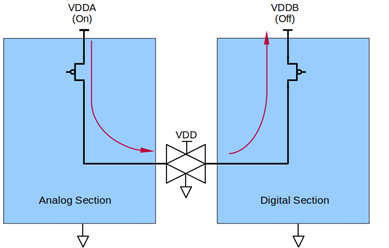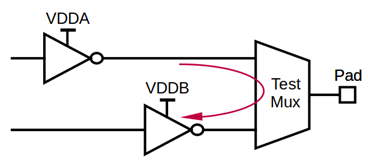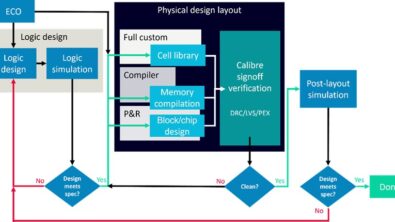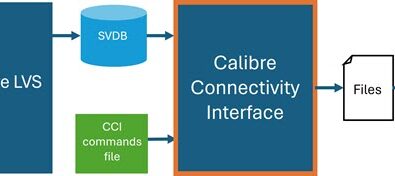Solving inter-domain leakage challenges: Enhancing IC design with Insight Analyzer

By Charlie Olson
Design reliability remains a top priority for engineers in the world of semiconductor technology. One critical challenge is identifying and mitigating inter-domain leakage, a phenomenon that threatens both efficiency and performance. This blog explores the causes of inter-domain leakage, the limitations of traditional methods, and how modern tools like Insight Analyzer provide innovative solutions to address these challenges
Understanding inter-domain leakage
An especially nefarious type of circuit leakage happens between power rails or power domains. The problem occurs when a direct current (DC) path is formed between two power rails, either when the domains are at different voltages or when one rail is turned off. This DC path can include:
- Parasitic body diodes
- Power switches with faulty logic controls
- Transmission gates
- Other circuit elements
Finding inter-domain leakage is vitally important for design reliability, but it is a known weakness of traditional electronic design automation (EDA) simulation tools. Traditional techniques are time-consuming, and reactive rather than proactive.
Overcoming the limitations of electrical rule checking (ERC)
In electrical rule checking (ERC), “don’t-care” results are valid situations that don’t pose a circuit risk and must be manually checked (and waived) by the designer. Traditional ERC software reports many “don’t-care” results, precisely because it is so difficult to distinguish true leakage risks from false errors. Figure 1 shows a classic “don’t-care” result that is frequently reported with traditional ERC software.

Complexities of power domain leakage
Before exploring a solution, it is important to understand the many different IC design complexities that contribute to the risk of power domain leakage.
- Power rail variability:
- Power rails can be internal (switched device) or external (raw power to the chip).
- Values can range from fixed voltages to variable ranges or even an off state.
- Unified power format (UPF) considerations:
- UPF defines power rail states, switches, and isolation requirements.
A complete solution for inter-domain leakage takes a state-based approach, addressing these nuances to minimize false positives.

Steps to reduce false results
Solving the challenges of accurately identifying inter-domain leakage is a two-stage process:
- Identify all DC paths:
- Tools locate DC paths between power domains based on parasitic diodes.
- Filter results:
- Advanced analysis distinguishes true risks from “don’t-care” cases, eliminating false positives.
Leveraging the Insight Analyzer tool
Insight Analyzer addresses power domain leakage from multiple perspectives. Depending on the type of problem, and the circuit structures involved, leakage might be easily identified from one angle, but invisible from another. This tool contains a rich set of built-in checks for circuit reliability issues, including leakage between power domains. Insight Analyzer’s state-based approach will trace the control logic “upstream” to determine which devices can be on or off together, to find leakage paths while eliminating false positives.
Key features of Insight Analyzer
The Insight Analyzer’s built-in checks provide:
- A verbal description of the problem
- Reference numbers linked to detailed documentation
- Circuit traces showing the leakage path
- Upstream controls contributing to the violation
Benefits of Insight Analyzer:
- Fast, accurate inter-domain leakage identification
- Simplified debugging with actionable insights
- Improved design reliability and quality
Practical fixes for inter-domain leakage
Fixing inter-domain leakage can range from straightforward adjustments to complex redesigns:
- Simple solutions:
- Add cutoff switches.
- Modify control signals.
- Complex redesigns:
- Revamp affected areas of the circuit.
Regardless of the complexity, the Insight Analyzer simplifies debugging by providing detailed reports of issues and their root causes.
Conclusion
As semiconductor technology continues to grow in complexity and shrink in size, leakage mitigation has become an ever-present challenge for circuit designers. Many leakage issues cannot be caught by simulation or by visual inspection of a circuit. Identifying inter-domain leakage between different power domains is especially challenging. The Insight Analyzer tool provides circuit designers with a designer-driven reliability verification tool capable of running full-chip, transistor-level circuit analysis. Using Insight Analyzer checks, circuit designers can improve design reliability and quality with fast, accurate inter-domain leakage identification and correction.
For more details about how Insight Analyzer’s built-in checks can find difficult inter-domain leakage issues, read the full paper here.


